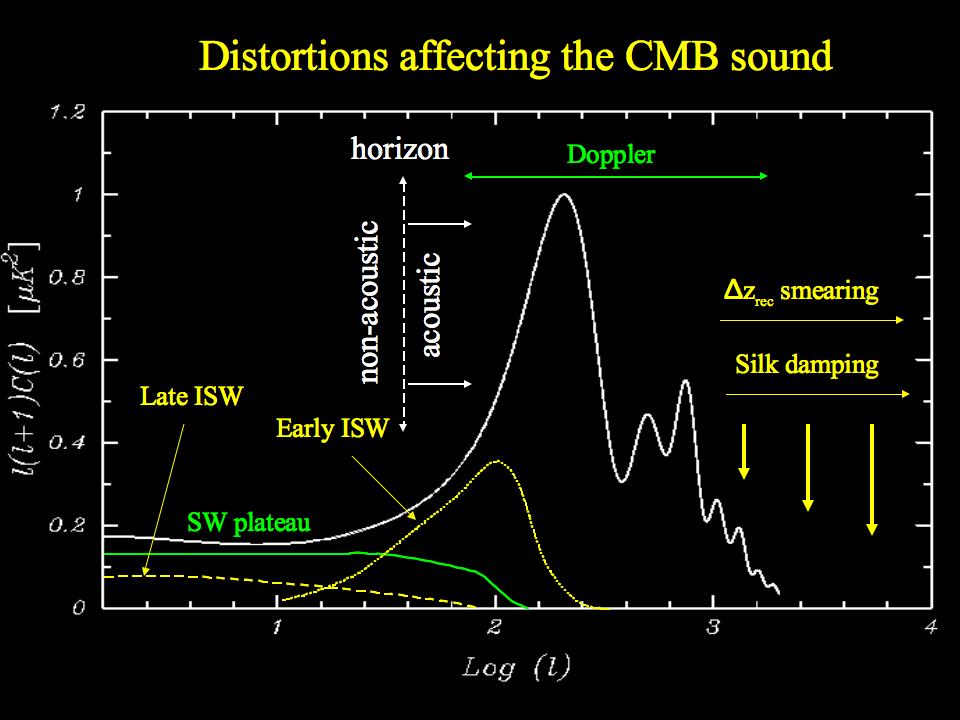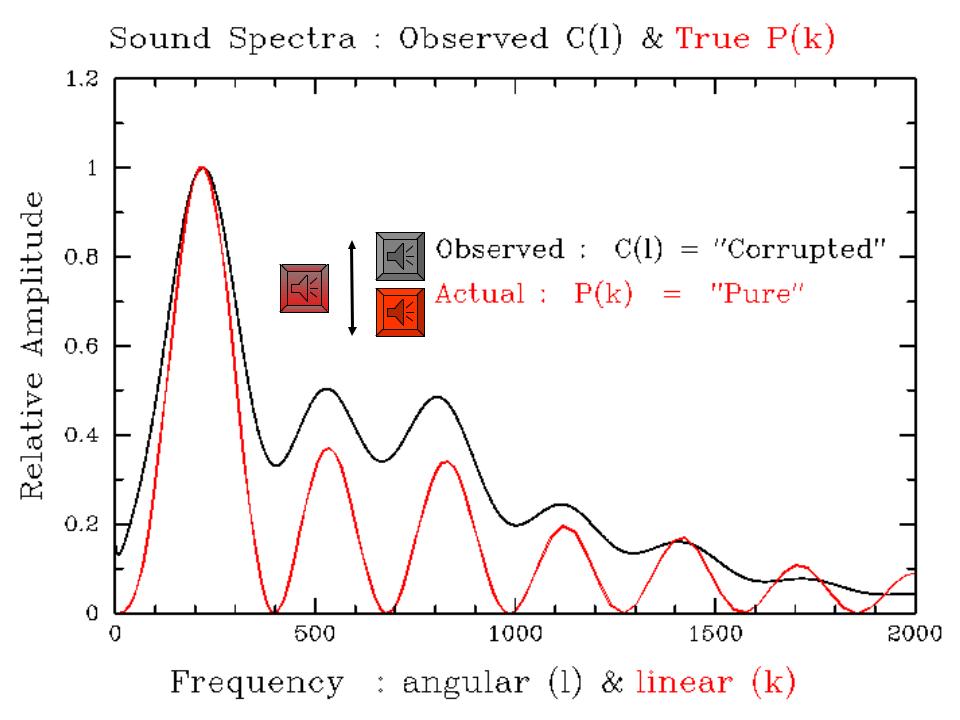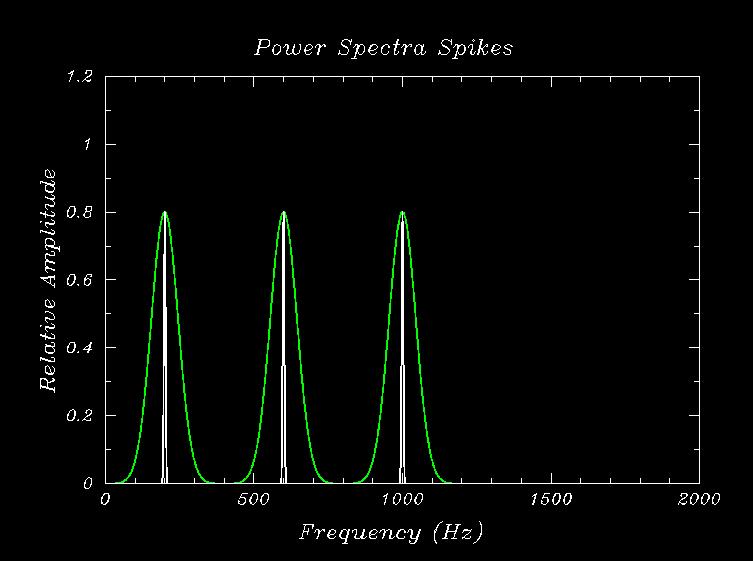
My description so far suggests Nature is just a little too good to be true – a perfectly recorded concert that is transmitted across the entire Universe and recovered with no hint of distortion? That's a tall order. And indeed it is; in reality things are not so convenient. As luck would have it, however, tracking down the distortions and correcting them uncovers a wonderful new way to explore the sounds. Ultimately, this will allow us to follow their full evolution from the Big Bang to the first stars.
So far, we've assumed that CMB patchiness accurately reveals peaks and troughs of sound waves. From our perspective, therefore, any patchiness which is not due to these waves, adds distortion. In reality, such distortions arise in three contexts: within the fog; during the journey across space; and within our galaxy. Returning to the concert broadcast metaphor, these correspond to: problems with the concert hall; cross-country radio interference; and poor reception at the listener's home.
Fortunately, the last two of these are relatively easily dealt with. Our galaxy's microwave patchiness has a quite different "color" from the CMB and so is easily removed. The principle source of inter-galactic distortion is caused by hot gas in clusters of galaxies, but this only affects the smallest patches, just above the audio range we're currently interested in. The concert hall itself is where the trouble lies...
While we may wish otherwise, the cosmic concert hall is far from perfect — indeed sitting in an equivalent terrestrial concert hall, we would notice a significant loss of all high notes; a persistent atonal reverberation; and an underlying almost sub-audible rumble shaking our insides. The reasons for these effects are many, and most are rather technical, but lets briefly review the major ones, using the next slide to illustrate their impact on the CMB sound spectrum.

|
Here's a brief list of the major sources of non-acoustic distortions which affect the sound spectrum measured from the CMB.
Faced with all these distortions, what can we do? What we'd like to do, is sit right in the middle of the orchestra to hear the real, uncorrupted sound. Unfortunately, that's not an option – remember the "live" broadcast ended 14 billion years ago, and the musicians have already gone home (in fact, we are they – everything you now see around you was once back in the cosmic orchestra, playing its part, long long ago).
What we can do is try to re-create the orchestra, here on Earth, inside a computer. Over the past 20 years, cosmologists have worked hard to understand the physics of the early Universe, and as a result there now exist highly sophisticated – and highly reliable – computer "models" of the expanding, cooling, oscillating primordial gases. One such computer program, written by Uros Seljak and Matias Zaldarriaga, is called CMBFAST and is widely used by cosmologists to "study" the young Universe. Fortunately, for our purposes, CMBFAST works mainly with the pure sound, and only at the end of its calculation does it fold in all the distortions to reproduce what we see on the microwave background. By catching the calculation before the distortions are introduced, we can extract the pure sound.
Now, you may think this is cheating – generating cosmic sounds by computer – but recall that the final results match the microwave background exceedingly well, so we are confident that the pure sounds are also accurate. Listening to a good electronic piano which is designed to sound like a real one is OK (at least for most people!).
The output from CMBFAST is also a sound spectrum, but this time it is the sound spectrum of the pure sound, and is called P(k) [read "P of k"]. We can think of P(k) and C(l) as the "Pure" and "Corrupted" sound spectra, though that is not really how cosmologists think of them — P(k) describes the 3-D pattern of sound waves, while C(l) describes the 2-D pattern after the waves are projected onto the foggy wall of the CMB, with distorting effects included.
The next slide shows C(l) in black, and P(k) in red, together with their sounds. Notice how P(k) has a much cleaner fundamental and harmonics — all the Doppler blurring which filled the regions between the harmonics has gone, and the highest harmonics are stronger, being undamped.
Now click the buttons to compare the sounds:

|
Corrupted sound: C(l) |
To my ear, P(k) definitely sounds "purer" – less rough, more like a note, perhaps a little more "hollow". Nevertheless, it is still nowhere near a pure note — the fundamental and harmonics are still too broad for our ears to hear a simple note.
To illustrate this, the image below shows 3 notes, at 200, 600, and 1000 Hz, but each in two forms: a pure tone and a broadened tone. Try playing them and see what a difference a slight spread in frequency makes.

|
200 Hz (Spike + Broad) |
Notice that the lowest note has the least defined pitch, despite having the same frequency spread as the other two — our ears typically notice frequency ratios, and as such the lowest note has the largest frequency spread compared to its central pitch.